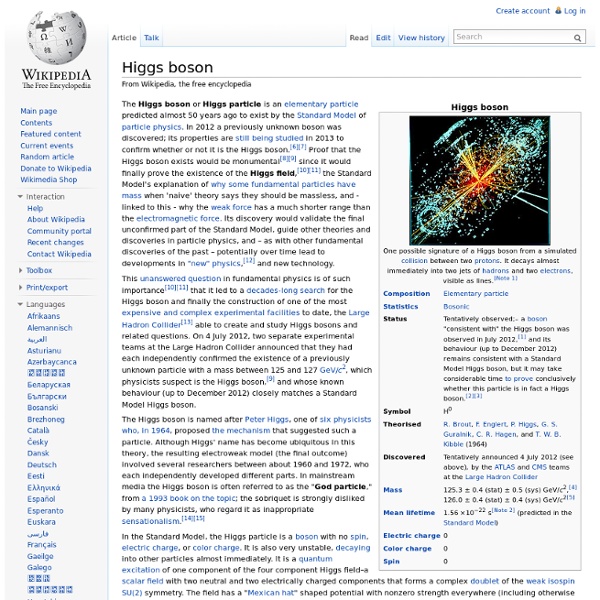The Wicker Man (1973
Edit Storyline Sgt.
Quantum gravity
Quantum gravity (QG) is a field of theoretical physics that seeks to describe the force of gravity according to the principles of quantum mechanics. Although a quantum theory of gravity is needed in order to reconcile general relativity with the principles of quantum mechanics, difficulties arise when one attempts to apply the usual prescriptions of quantum field theory to the force of gravity.[3] From a technical point of view, the problem is that the theory one gets in this way is not renormalizable and therefore cannot be used to make meaningful physical predictions. As a result, theorists have taken up more radical approaches to the problem of quantum gravity, the most popular approaches being string theory and loop quantum gravity.[4] Strictly speaking, the aim of quantum gravity is only to describe the quantum behavior of the gravitational field and should not be confused with the objective of unifying all fundamental interactions into a single mathematical framework.
Standard Model
The Standard Model of particle physics is a theory concerning the electromagnetic, weak, and strong nuclear interactions, as well as classifying all the subatomic particles known. It was developed throughout the latter half of the 20th century, as a collaborative effort of scientists around the world.[1] The current formulation was finalized in the mid-1970s upon experimental confirmation of the existence of quarks. Since then, discoveries of the top quark (1995), the tau neutrino (2000), and more recently the Higgs boson (2013), have given further credence to the Standard Model.
HomeschoolScientist
Upload TheHomeschoolScientist.com Subscription preferences Loading... Working... HomeschoolScientist
Boson
In quantum mechanics, a boson (/ˈboʊsɒn/,[1] /ˈboʊzɒn/[2]) is a particle that follows Bose–Einstein statistics. Bosons make up one of the two classes of particles, the other being fermions.[3] The name boson was coined by Paul Dirac[4] to commemorate the contribution of the Indian physicist Satyendra Nath Bose[5][6] in developing, with Einstein, Bose–Einstein statistics—which theorizes the characteristics of elementary particles.[7] Examples of bosons include fundamental particles such as photons, gluons, and W and Z bosons (the four force-carrying gauge bosons of the Standard Model), the recently discovered Higgs boson, and the hypothetical graviton of quantum gravity; composite particles (e.g. mesons and stable nuclei of even mass number such as deuterium (with one proton and one neutron, mass number = 2), helium-4, or lead-208[Note 1]); and some quasiparticles (e.g. Cooper pairs, plasmons, and phonons).[8]:130
How DNA Proves God Made All Creatures Great and Small
Charles Darwin’s theory of natural selection may be able to explain how living creatures can evolve from one form to another, but it cannot explain how something that was not alive evolved into the first life on Earth. Stephen C. Meyer, a Cambridge trained scholar in the philosophy of science, does have an explanation for how life on Earth began: the DNA in every cell of every creature shows unmistakable evidence of having been deliberately designed by an intelligent being. Meyer lays out his analysis in a new book, Signature in the Cell: DNA and the Evidence for Intelligent Design. He discussed his book and his case for an Intelligent Designer with CNSNews.com Editor in Chief Terry Jeffrey.
drawstuffrealeasy
Upload ShooRaynerDrawing Channel Subscription preferences
Wave function
However, complex numbers are not necessarily used in all treatments. Louis de Broglie in his later years proposed a real-valued wave function connected to the complex wave function by a proportionality constant and developed the de Broglie–Bohm theory. The unit of measurement for ψ depends on the system. For one particle in three dimensions, its units are [length]−3/2.
King World News
KWN SPECIAL: ROADMAP FROM $5,000 TO $20,000 GOLD & MORE - Grant Williams: Vulpes PM Portfolio Manager & IM Strategy Advisor - Grant Williams is the portfolio manager of the Vulpes Precious Metals Fund and strategy advisor to Vulpes Investment Management in Singapore. Grant has 28 years of experience in finance on the Asian, Australian, European and US markets and has held senior positions at several international investment houses, including Robert Fleming, UBS and Credit Suisse. Since 2009, he has also been writing the popular investment newsletter Things That Make You Go Hmmm...
Old School Television
Upload Subscription preferences Loading... Working...



